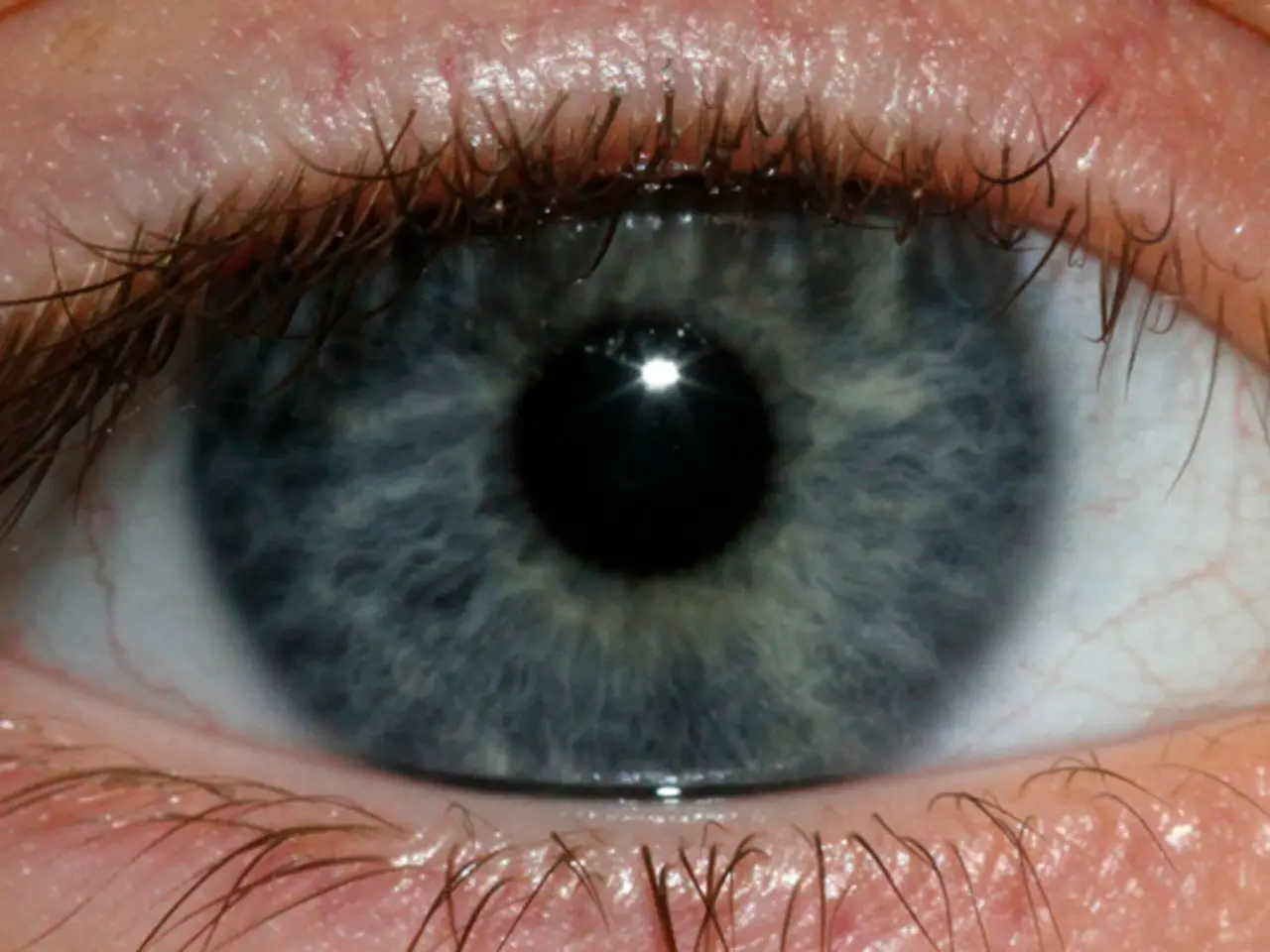Different Eye Shapes: Causes, Solutions, and DIY Solutions
Asymmetrical eyes, where one eye appears different in size, position, or alignment compared to the other, can be a concern for many individuals. This condition may arise from various causes, ranging from natural variations to underlying medical conditions.
Common causes of asymmetrical eyes include genetics and natural facial variations, ptosis (drooping of the eyelid), strabismus (misalignment of the eyes), anisocoria (unequal pupil sizes), thyroid eye disease, and tumors, infections, or prior surgeries that distort the eye or eyelid anatomy.
Treatment options depend on the cause. For ptosis, non-surgical options include special eyewear or eyelid crutches, while surgical treatments may involve blepharoplasty to tighten or shorten eyelid muscles or tendons. Strabismus can be managed with eye exercises, corrective glasses, surgical muscle correction, or botulinum toxin injections. Anisocoria treatment depends on the underlying cause, with benign physiological anisocoria requiring no treatment. Thyroid eye disease management involves medical management of thyroid dysfunction and corticosteroids or surgery for severe cases affecting eyelids and eye position. Treatment for tumors, infections, or prior surgeries will depend on the specific diagnosis.
Home remedies for managing asymmetrical eyes include using cosmetic techniques such as makeup to balance appearance, avoiding chronic eye rubbing or trauma, protecting eyes from injury, and regular check-ups with an eye doctor.
Surgical and medical treatments are generally recommended only after thorough clinical evaluation by an ophthalmologist or oculoplastic specialist, especially if the asymmetry is new, worsening, or accompanied by other symptoms like vision changes or pain. Home remedies alone cannot correct structural causes but can help manage appearance or mild discomfort.
Facial asymmetry can be normal and expected, often due to genetics, aging, or lifestyle factors. However, in some cases, it can point to an underlying condition such as Bell's palsy, trauma, sinus condition, Grave's disease, or stroke. In these cases, a person should seek treatment.
A brow lift is a cosmetic procedure that elevates the eyebrows to give the face a more youthful appearance and provide greater facial symmetry. Botox is a nonsurgical option for facial asymmetry, involving the injection of Botox, a muscle relaxer, into the area around the eyebrows to lift the brows and reduce the appearance of uneven eyes. Potential risks of these procedures include bleeding, further asymmetry, hair loss or changes to the hairline, infections, allergic reactions to the anesthetic, scarring, temporary or permanent skin numbness, and blindness in rare cases.
Blepharoplasty is a type of cosmetic surgery that corrects uneven eyelids by removing excess fat, muscle, or skin around the eye area to make the eyes appear more symmetrical. Other risks of blepharoplasty include bleeding, infections, allergic reactions to the anesthetic, scarring, chronic conjunctivitis, swelling that lasts for more than three months, and blindness in rare cases.
In most cases, uneven eyes do not require treatment, but if an underlying medical condition is contributing to facial asymmetry, treatment for the condition may be necessary. If a person's eyes are uneven in photos, it may be due to a naturally asymmetrical face or the angle at which the photo was taken.
As people age, the soft tissues in the face relax, which can cause asymmetry. Chronic maxillary sinusitis, maxillary sinus tumors, silent sinus syndrome, and Graves' disease can lead to enophthalmos and potential facial asymmetry. Lifestyle factors such as smoking and excessive sun exposure can contribute to uneven eyes.
In conclusion, understanding the causes of asymmetrical eyes is essential for appropriate management. Regular eye care, protection, and timely consultation with an eye specialist are crucial for early intervention and effective treatment.
- Some individuals might experience asymmetrical eyes due to medical conditions like type 2 nsclc (non-small cell lung cancer), diabetes, depression, or bipolar disorder, which could influence overall health and wellness, including eye health.
- Atopic dermatitis, a common skin condition, could potentially affect the appearance of one's eyes, causing asymmetry, though it primarily impacts the skin.
- Home remedies for managing asymmetrical eyes can include specific skin-care routines, such as using makeup to balance appearance and protecting the eyes from injury or trauma.
- Mental health conditions like depression can cause facial asymmetry due to muscle imbalance or facial expressions, leading to distorted appearances.
- A doctor might recommend cosmetic procedures like a brow lift or Botox for mental-health-related facial asymmetry, considering the associated risks such as bleeding, further asymmetry, or even rare complications like blindness.
- Attention should be paid to COPD (chronic obstructive pulmonary disease) and respiratory conditions, which, if left untreated, could lead to weight loss, affecting the appearance and symmetry of one's face.
- Eventually, aging, smoking, and excessive sun exposure might contribute to facial asymmetry along with medical conditions, necessitating regular check-ups with a medical professional to ensure proper health-and-wellness management.
- Routine eye exams, medical check-ups, and medication, if necessary, can help address underlying conditions contributing to facial asymmetry and enable timely intervention for a better prognosis.
- It's crucial to promote awareness about the significance of maintaining facial symmetry as it can serve as an indicator of various medical-conditions, and undergoing suitable treatments can improve one's overall health and wellbeing.




